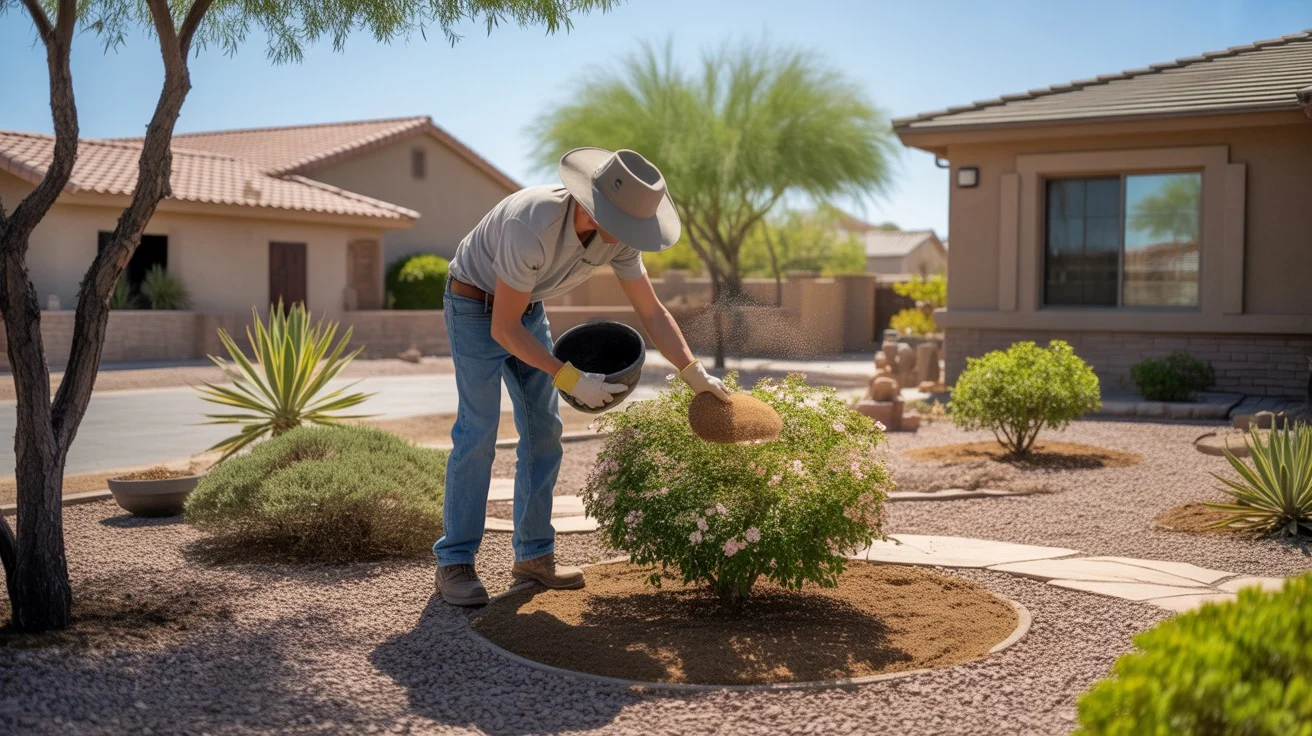Keeping your Gilbert yard lush and thriving through the seasons requires a smart approach to fertilizing. With our hot summers and mild winters, knowing when and how to feed your plants can make all the difference. Seasonal fertilizing helps your landscape stay vibrant and healthy year-round.
Understanding Gilbert’s Growing Seasons
Before diving into a fertilizing schedule, it’s important to understand Gilbert’s unique growing seasons. Our warm climate means many plants continue growing through winter, while summer’s intense heat slows growth for some species. Timing your fertilizer around these patterns promotes optimal health.
Gilbert’s primary growing seasons are spring and fall. Many plants experience a burst of growth as temperatures warm up in spring, making it an ideal time for fertilizing. Fall is another key time, helping plants recover from summer stress and prepare for winter.
While growth may slow in summer and winter, some plants still benefit from light fertilizing during these seasons. The key is adjusting your approach to match the plant’s needs and environmental conditions.
Spring Fertilizing for a Strong Start

Spring is the perfect time to give your Gilbert yard a nutrient boost. As plants wake up from winter dormancy, a dose of fertilizer supports lush new growth. Aim to fertilize in early to mid-spring, just as plants begin actively growing again.
For lawns, use a balanced fertilizer with equal parts nitrogen, phosphorus, and potassium (such as a 15-15-15 blend). This promotes healthy leaf growth and strong roots. Apply evenly, following package instructions, and water thoroughly.
Flowering plants, shrubs, and trees also benefit from spring feeding. Use a fertilizer formulated for your specific plant type, such as an acidic blend for azaleas or a low-nitrogen mix for desert-adapted plants. A slow-release formula provides long-lasting nutrients as plants grow.
Keeping Plants Fed Through Summer
Gilbert’s intense summer heat can stress even desert-hardy plants. While fertilizing should generally be lighter in summer, some plants benefit from extra nutrients to withstand the harsh conditions.
For lawns, a slow-release, high-potassium fertilizer helps promote heat and drought tolerance. Avoid heavy applications of quick-release nitrogen, which can burn grass in high temperatures. Water deeply and infrequently to encourage deep root growth.
Many native and desert-adapted plants need minimal summer fertilizing. Overfeeding can cause weak, spindly growth that’s more prone to heat damage. Stick to light applications of a low-nitrogen fertilizer unless plants show signs of nutrient deficiency, like yellowing leaves.
Fertilize in Fall for Winter Resilience
Fall is your landscape’s time to recover from summer and prepare for winter’s cooler (but still mild) temperatures. Fertilizing in early fall gives plants a nutrient store to draw from during the winter months.
For lawns, a fall application of a nitrogen-rich fertilizer (like a 20-5-10 blend) supports lush growth and deep greening. It also helps grass store energy for a quicker spring green-up. Overseed with a cool-season grass like ryegrass for year-round color.
Perennials, shrubs, and trees also benefit from fall feeding. A slow-release, low-nitrogen fertilizer promotes root growth and overall health without encouraging tender new leaves that could be damaged by cold. Stop fertilizing about 6 weeks before first frost to allow plants to harden off.
Winter Feeding for Select Plants
While most Gilbert plants go semi-dormant in winter, some may still benefit from light fertilizing. Winter-flowering plants like pansies, snapdragons, and cyclamens need consistent nutrients to support blooming. Use a bloom-boosting fertilizer every 2-3 weeks.
Citrus and other fruit trees also need winter feeding as they enter their active growing season. Apply a citrus-specific fertilizer in late winter, just before bud break, to support healthy fruiting. Acid-loving plants like gardenias may need an extra dose of iron.
For most other landscape plants, hold off on winter fertilizing. The key is providing just enough nutrients to maintain health without promoting tender growth that could be damaged if temperatures dip.
Choosing the Right Fertilizer Types
With so many fertilizer options, it’s important to choose formulas well-suited for Gilbert’s climate and your specific plants. Look for blends designed for desert landscapes, like low-nitrogen mixes that won’t overstimulate growth.
Organic fertilizers like compost, manure, and bone meal are excellent options for Gilbert yards. They release nutrients slowly, improving soil health over time. Many desert plants thrive with organic feeding.
Synthetic fertilizers offer a quick nutrient boost and can be helpful for heavy feeders or nutrient-deficient plants. However, they require more precise application to avoid damage. Always follow package instructions carefully.
Proper Fertilizer Application Techniques
How you apply fertilizer is just as important as what kind you use. Proper techniques ensure plants can access nutrients without risk of damage.
For granular fertilizers, use a spreader for even coverage. Water thoroughly after applying to move nutrients into the soil. Avoid getting fertilizer on plant leaves, as it can cause burning.
Liquid fertilizers offer more immediate nutrient absorption but require frequent application. Dilute properly to avoid root burn and apply around the plant’s drip line, not directly on leaves or stems.
Slow-release fertilizers minimize risk of overfeeding and last for several months. Work granules into the top few inches of soil or use stakes around the plant’s drip line. Water well after applying.
Adjusting for Your Yard’s Microclimates
One final tip for successful seasonal fertilizing in Gilbert: consider your yard’s microclimates. Factors like sun exposure, soil type, and moisture levels can vary across your landscape, affecting plants’ nutrient needs.
Plants in hot, sunny areas may need lighter but more frequent fertilizing to compensate for quick nutrient uptake. Those in shady, cooler spots may need less feeding. Arid areas may require slow-release formulas to sync with deep, infrequent watering.
Getting to know your yard’s microclimates allows you to fine-tune your fertilizing approach for each area. Combined with proper timing and fertilizer choice, this targeted strategy will keep every part of your landscape lush and thriving season after season.











